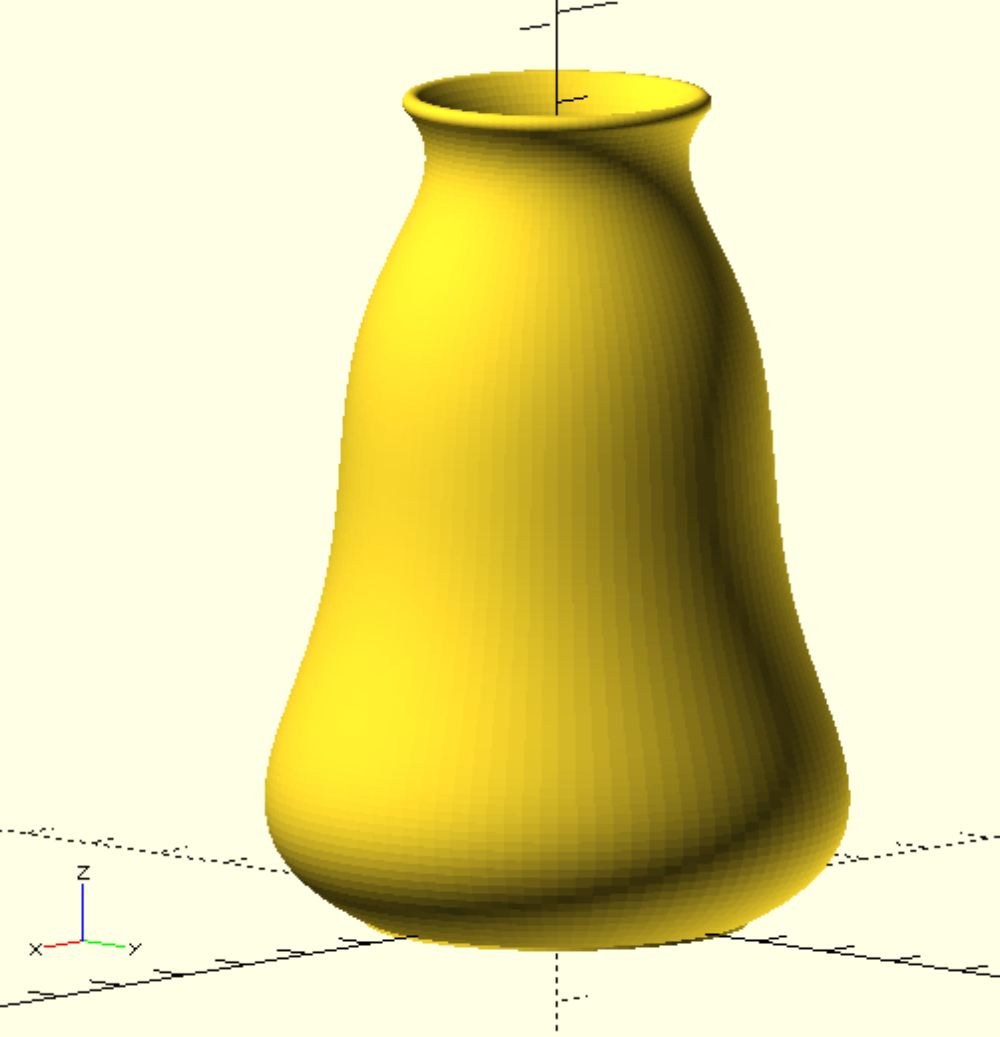OpenSCAD implementation of bezier curves of any degrees
Recently, I saw a Youtube video where someone implemented bezier curves for 3 and 4 degrees, and I thought it would be nice if there would be a version with any degrees. I didn’t find something like that, so I implemented it myself. First, you need a definition of a line (which is surprisingly not a standard datatype in OpenSCAD):
module line(p1,p2,w) {
hull() {
translate(p1) circle(r=w);
translate(p2) circle(r=w);
}
}
module polyline(points, index, w) {
if(index < len(points)) {
line(points[index - 1], points[index],w);
polyline(points, index + 1, w);
}
}
For creating a bezier curve I had to define a few functions. I’m wondering why OpenSCAD has such a weak function definition, where you basically only can define one statement and not a whole block like in almost every other language. However, I wrote a recursive implementation of sampling one point at the bezier curve and call this function several times to build an array of points.
function choose(n, k)=
k == 0? 1
: (n * choose(n - 1, k - 1)) / k;
function _point_on_bezier_rec(points,t,i,c)=
len(points) == i ? c
: _point_on_bezier_rec(points,t,i+1,c+choose(len(points)-1,i) * pow(t,i) * pow(1-t,len(points)-i-1) * points[i]);
function _point_on_bezier(points,t)=
_point_on_bezier_rec(points,t,0,[0,0]);
//a bezier curve with any number of control points
//parameters:
//points - the control points of the bezier curve (number of points is variable)
//resolution - the sampling resolution of the bezier curve (number of returned points)
//returns:
//resolution number of samples on the bezier curve
function bezier(points,resolution)=[
for (t =[0:1.0/resolution:1+1.0/(resolution/2)]) _point_on_bezier(points,t)
];
The first parameter is just an array of 2D-points, defining the control points. Note, that you can define the resolution of the sampling via the second parameter.
In the following example, I created a simple vase with 6 control points. The whole resolution can be defined as always with the $fn global variable. I recommend using a small value while debugging because it is significantly faster. I just set the number of control points of the bezier curve to the same value. With the variables radius, height and strength, I defined the size of the vase. The control points p0 to p5 are relative to these variables to allow a variable size. I used a cylinder for the base plate because it is difficult to define a really flat bezier curve, which can be printed nicely. Or one could use boolean combination to cut the base flat. However, by calling the bezier function, create a polyline with the result points and extrude this with a rotate_extrude, one gets a pretty nice result.
resolution = 100;
$fn = resolution;
radius = 20;
height = 90;
strength = 1;
p0 = [radius,0];
p1 = [radius*3,height*0.2];
p2 = [-radius,height*0.4];
p3 = [radius*3,height*0.7];
p4 = [0,height*0.8];
p5 = [radius*0.8,height*1];
translate([0,0,-strength]) cylinder(r=radius+strength,h=strength*2);
rotate_extrude()
polyline(bezier([p0,p1,p2,p3,p4,p5],resolution),1,strength);
This could be also combined into one function:
//create a 3D rotational model with a bezier curve of given points, resolution and thickness
module bezier_model(points,resolution,thickness) {
translate([0,0,thickness/2]) rotate_extrude() polyline(bezier(points,resolution),1,thickness/2);
}
Result image:

